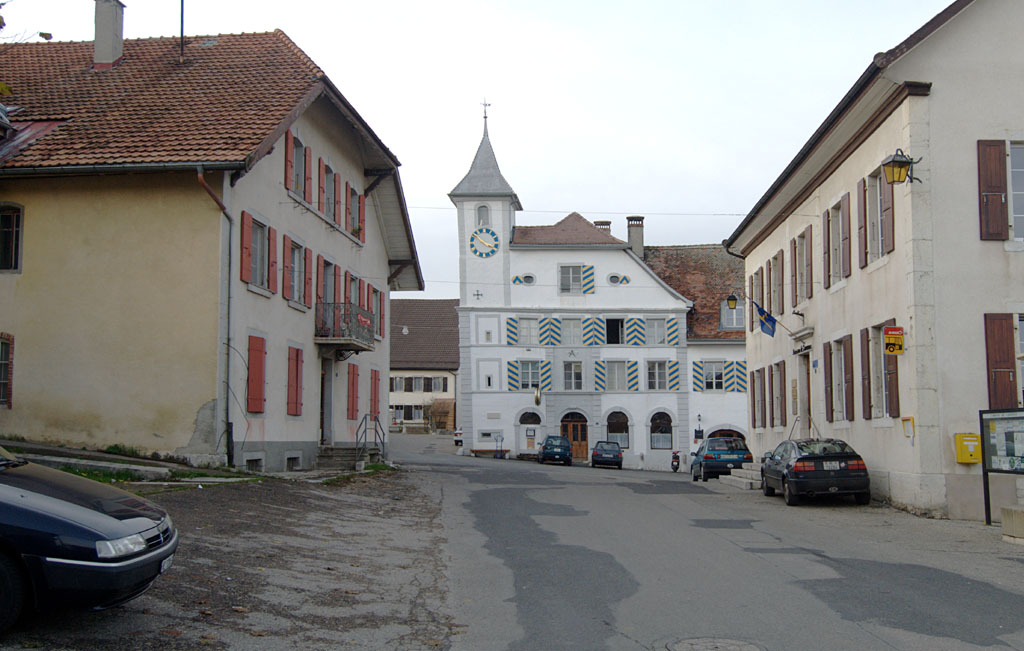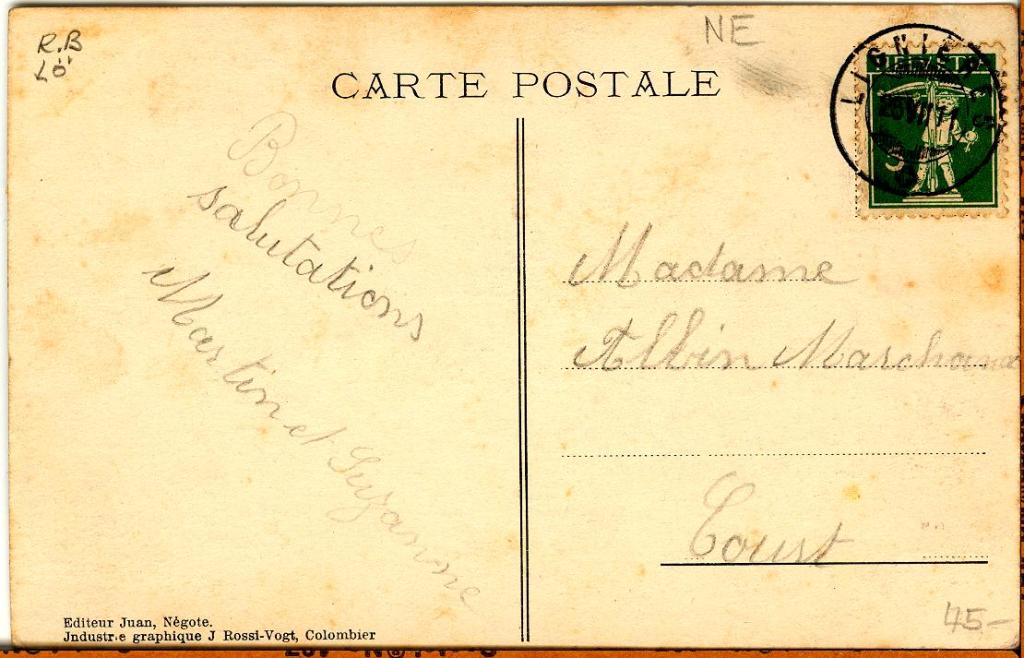

|
Lignières: Then and Now |
|
Click image for historical view.


The historical photograph is courtesy of M. Werner Löffel of Lignières, who kindly contributed images of his post card collection to the archives of the Fondation de l'Hôtel de Commune de Lignières.
|
by John Walker May, 2007 |
|
This post card, mailed in 1911, shows the most common view of “downtown” Lignières, which is now called La Place du Régent. The building in the centre is the Hôtel de Commune (town hall), which dates from 1730 and escaped the fire of 1832. Its current address is Place du Régent 2, RACN 010-6456-00064. To the left (Place du Régent 5, RACN 010-6456-00063) is the then Pensionnat Bonjour, a summer pension for those spending their holidays in the village. At right (Place du Régent 1, RACN 010-6456-00076) is the present-day Maison de Commune which was, when the “then” picture was taken, the village school, having been built for that purpose between 1835 and 1837. It later assumed the administrative function, with the Hôtel de Commune now a café-restaurant.
Cows are seen less frequently in the centre of the village than a century ago, but at least one day a year they are present in abundance, and they can get quite excited at the prospect. Toby the Vigilant Village Dog no longer, however, checks everybody's papers when they enter.